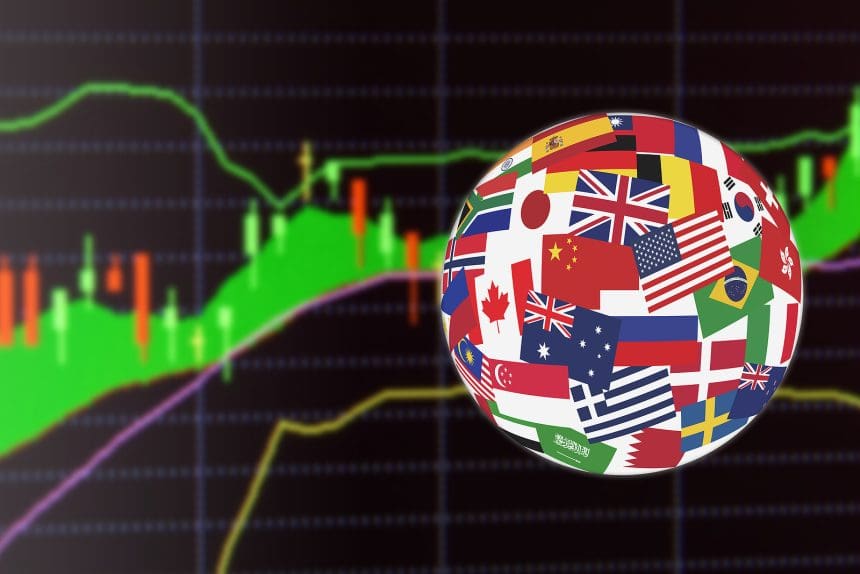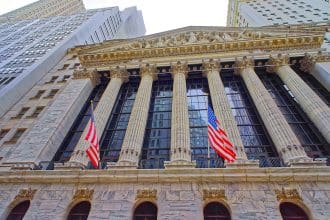Global Financial Markets Brace for Major Shifts if Russia–Ukraine Peace Deal Is Reached
ST. LOUIS, MO (STL.News) Global Financial Markets – After more than three years of devastating conflict, international investors and policymakers are watching closely as discussions of a possible peace deal between Russia and Ukraine gain traction. While negotiations remain fragile and the geopolitical landscape is highly complex, analysts agree that a resolution—whether a partial ceasefire or a comprehensive peace accord—would have sweeping consequences for global financial markets. From equity rallies in Europe to potential drops in commodity prices, the implications of peace could reshape the world’s economic outlook.
This article examines the expected financial market reactions across major asset classes, regions, and industries, while also considering the longer-term effects of reconstruction, inflation, and global trade realignment.
Global Financial Markets – European Equities Positioned for Relief
The most immediate beneficiaries of a peace agreement are likely to be European equity markets. Since February 2022, European stocks have carried a geopolitical risk discount, with heightened exposure to energy costs, defense spending, and macroeconomic uncertainty.
A peace deal would ease that pressure. Analysts expect the STOXX Europe 600 and indices in Germany, France, and the United Kingdom to climb as investors rotate back into consumer-facing and industrial sectors.
- Defense companies such as BAE Systems and Rheinmetall, which enjoyed surging demand during wartime, may see pullbacks.
- Consumer goods, retail, and manufacturing stocks are expected to strengthen, reflecting optimism that households and businesses will face fewer inflationary shocks from energy.
- Financial institutions in Europe could also benefit from reduced credit risks tied to war-related uncertainty.
The shift would mark a rare reversal of wartime dynamics: money flowing out of defense and into traditional growth and consumer sectors.
Global Financial Markets – Russian and Ukrainian Markets: A High-Stakes Reopening
The potential for peace would spark renewed interest in Russian and Ukrainian financial markets, though significant hurdles remain.
- Russian equities and bonds have been isolated mainly from Western capital markets due to sanctions. A peace deal might open the door for partial sanctions relief, potentially triggering a rally on the Moscow Exchange (MOEX). However, Russia’s sovereign credit ratings remain below investment grade, and Western institutions may tread carefully.
- Ukraine’s financial system, battered by war, could experience an infusion of international aid, loans, and private investment. Reconstruction projects valued at $500 billion or more over the next decade would require massive financial coordination, creating opportunities in infrastructure financing, insurance, and foreign direct investment.
Yet, volatility is expected to remain. Even with a peace deal, uncertainty about long-term political stability, reparations, and security guarantees will temper investor enthusiasm.
Global Financial Markets – U.S. Markets: Reduced Geopolitical Premium, New Inflation Calculus
On Wall Street, the reaction would likely be twofold.
- Equities: U.S. stocks may benefit indirectly from global stability. The Dow Jones Industrial Average, S&P 500, and Nasdaq Composite could benefit from reduced volatility, although the effect may be less pronounced than in Europe. Large-cap multinationals with exposure to European markets, energy-intensive industries, and global supply chains stand to gain the most.
- Bonds and Monetary Policy: A reduction in inflationary pressure from energy and food costs would ease the burden on the Federal Reserve. With markets already pricing in the potential for rate cuts, peace in Ukraine could accelerate a dovish shift in monetary policy. Treasury yields might edge lower as the Fed finds more room to stimulate without reigniting inflation.
In short, peace would reinforce the narrative of a “soft landing” for the U.S. economy.
Global Financial Markets – Energy Markets: Oil and Gas Prices Under Pressure
Few markets are as directly linked to the conflict as the energy sector. Since 2022, Europe has struggled to wean itself from Russian gas, while oil markets absorbed shocks from sanctions and rerouted exports.
- Oil Prices: A peace deal could put downward pressure on crude oil prices, as geopolitical risk premiums subside and fears of supply disruptions ease. Benchmark Brent crude and U.S. West Texas Intermediate (WTI) could stabilize in the $60–$70 per barrel range.
- Natural Gas: Europe’s natural gas markets, once crippled by reliance on Russian pipelines, might see relief in pricing. However, given the long-term pivot to LNG imports and renewable energy, a full return to pre-war Russian gas dependence is unlikely.
- Alternative Energy: Interestingly, peace may also slow some momentum in renewable energy markets, as governments no longer face the same urgency to diversify from fossil fuels. Still, climate goals will continue driving investment in clean energy.
For consumers, lower energy costs would translate into easing utility bills, cheaper transportation, and reduced inflationary pressures across multiple sectors.
Global Financial Markets – Commodities: Food and Raw Materials
Beyond oil and gas, the war severely disrupted global food and raw material supply chains. Ukraine, often referred to as the “breadbasket of Europe,” is a leading exporter of wheat, corn, and sunflower oil.
- Grain Prices: With ports reopened and fields restored, wheat and corn prices are expected to stabilize, easing pressure on emerging markets that rely heavily on imports.
- Metals: Ukraine and Russia are significant suppliers of steel, palladium, and nickel. A return to normalized trade would boost supply, potentially lowering input costs for the automotive, aerospace, and electronics industries.
The rebalancing of supply chains could provide relief to both developed and developing economies still grappling with food security challenges.
Global Financial Markets – Safe-Haven Assets: Retreat in Demand
During times of conflict, investors traditionally flock to safe-haven assets such as gold, the U.S. dollar, and government bonds. A peace deal would likely reverse that trend:
- Gold: Prices may decline as risk appetite improves and capital shifts back to equities.
- U.S. Dollar: Having strengthened during geopolitical uncertainty, the dollar could weaken modestly as investors diversify into riskier currencies and emerging markets.
- Treasuries and Bunds: Yields on U.S. and German government bonds may rise slightly as demand eases, although central bank policy will remain the dominant driver.
The broader theme would be a normalization of global capital flows.
Global Financial Markets – Inflation Outlook: Europe Stands to Gain the Most
Inflation has been one of the most destructive economic legacies of the war. Energy shocks, disrupted supply chains, and surging defense spending have all fueled price pressures.
A peace deal could reset the trajectory:
- Eurozone: Inflation would likely fall faster than anticipated, giving the European Central Bank (ECB) greater flexibility. The ECB could pivot toward easing policy sooner than expected, boosting growth.
- United States: Inflationary relief would be less dramatic but still notable, reinforcing expectations for Fed rate cuts.
- Emerging Markets: Lower energy and food prices would particularly benefit developing economies, where inflation has hit hardest.
Global disinflation would mark a turning point after years of price instability.
Global Financial Markets – Reconstruction: A $500 Billion Opportunity
Global Financial Markets – While immediate market reactions would grab headlines, the longer-term story centers on reconstruction. According to World Bank and European Union estimates, rebuilding Ukraine could cost half a trillion dollars over the next decade.
Global Financial Markets – Key sectors poised to benefit:
- Construction and Engineering: Firms in steel, cement, heavy machinery, and architecture will be central to rebuilding homes, cities, and infrastructure.
- Energy Infrastructure: Ukraine’s energy grid, severely damaged during the war, would require modernization. Investments in renewables, nuclear power, and grid resilience would be substantial.
- Financial Services: Banks, insurers, and investment firms would play a crucial role in channeling capital into reconstruction projects.
- Technology: Digital infrastructure, cybersecurity, and telecommunications will be priorities as Ukraine seeks to modernize its economy.
Global Financial Markets – Global investors—from private equity firms to sovereign wealth funds—are expected to compete for opportunities in what could become one of the most extensive reconstruction efforts since World War II.
Global Financial Markets – Risks and Uncertainties Remain
Despite the optimism, analysts caution that a peace deal would not erase risks overnight.
- Fragile Agreement: Any peace deal could be partial, temporary, or easily violated, leaving markets vulnerable to renewed volatility.
- Sanctions Landscape: Even with peace, Western governments may maintain significant sanctions, limiting Russia’s reintegration into the global financial system.
- Geopolitical Realignment: Russia’s pivot toward China, India, and other non-Western partners has altered trade flows that may not be easily reversed.
Thus, while the immediate reaction would be positive, investors must prepare for setbacks and prolonged uncertainty.
Conclusion: A Defining Moment for Global Finance – Global Financial Markets
If Russia and Ukraine achieve peace, the world’s financial markets would enter a new chapter. Europe would see the most dramatic relief, U.S. markets would benefit from reduced geopolitical risk, and emerging markets would gain from lower food and energy costs. Safe-haven assets would retreat, while commodities would return to normal levels. Most importantly, the reconstruction of Ukraine would create an unprecedented economic opportunity spanning infrastructure, energy, and finance.
Yet, this scenario remains contingent on political will and lasting stability. For now, markets continue to hedge between hope and caution. Should peace be achieved, the global financial system would not only breathe a sigh of relief but also embark on a decade-defining transformation.
© 2025 STL.News/St. Louis Media, LLC. All Rights Reserved. Content may not be republished or redistributed without express written approval. Portions or all of our content may have been created with the assistance of AI technologies, like Gemini or ChatGPT, and are reviewed by our human editorial team. For the latest news, head to STL.News.










